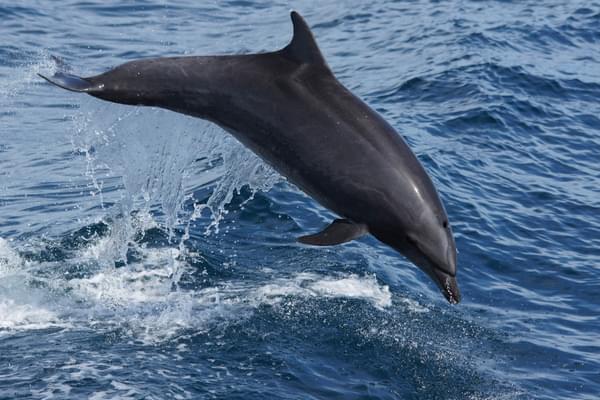For this week’s blog we couldn’t resist writing about some new research into one of the most enigmatic of all cetacean species, the pink botos river dolphins of the Amazon.
These freshwater dolphins live in the Amazon and Orinoco river basins of South America and over four years, a team from Canada’s CetAsia Research Group travelled to the Tocantins river in central Brazil, to study social interactions between the botos. What they observed was something never previously recorded and has resulted in a lot of head-scratching in scientific circles, as well as a lot of (awful) news headlines that can best be described as toilet humour.
Researchers documented a total of 36 separate instances of male botos deciding to urinate in the air while floating on their backs. While peeing, they swam in a linear, circular or zig-zag fashion. Often, another male would then swim to where the urine was landing in the water and stick his snout into the urine stream. Sometimes, he would even appear to chase the stream.
In something of an understatement, Dr Claryana Araújo-Wang, lead author of the study, told BBC Wildlife, ‘This behaviour will require more research, however, we hypothesise that aerial urination helps in advertising male quality in terms of social position or physical condition.’
Dolphins lack a strong sense of both smell and taste, so it’s very unclear how (or what) they are interpreting from the urine streams. The study’s authors suggested that the male botos may rely on their distinctive rostrum bristles to interpret their fellow boto’s urine composition, such as hormonal content indicating physical health and social position.
A previous study from a team at Stephen F. Austin State University in Texas confirmed bottlenose dolphins (Tursiops truncatus) use their tongues to identify other cetaceans through the taste of their urine.
However with the botos, the rather flamboyant aerial urination seems to be about actively seeking attention from fellow dolphins or sending a message, rather than being a discreet, anonymous pee in the water.
But what is being asked and what is being interpreted? One suggestion is that because the behaviour has only ever been observed in males, it may be socially learned. So as simple as a fad picked up and copied between other peeing male botos? A South American version of the salmon hat fad that has been observed with orcas in North America?
It’s likely that this behaviour signals some much more complex dialogue taking place amongst the botos than at present we can only guess at. While we are pushing the boundaries in our understanding of cetaceans, we can only be certain that we know very little about them at all.

The only way we can protect whales and dolphins is by understanding their distribution, and so monitoring is vital for effective conservation. Donate today to help ORCA continue to identify and study important whale hotspots around the world by visiting www.orca.org.uk/donate

